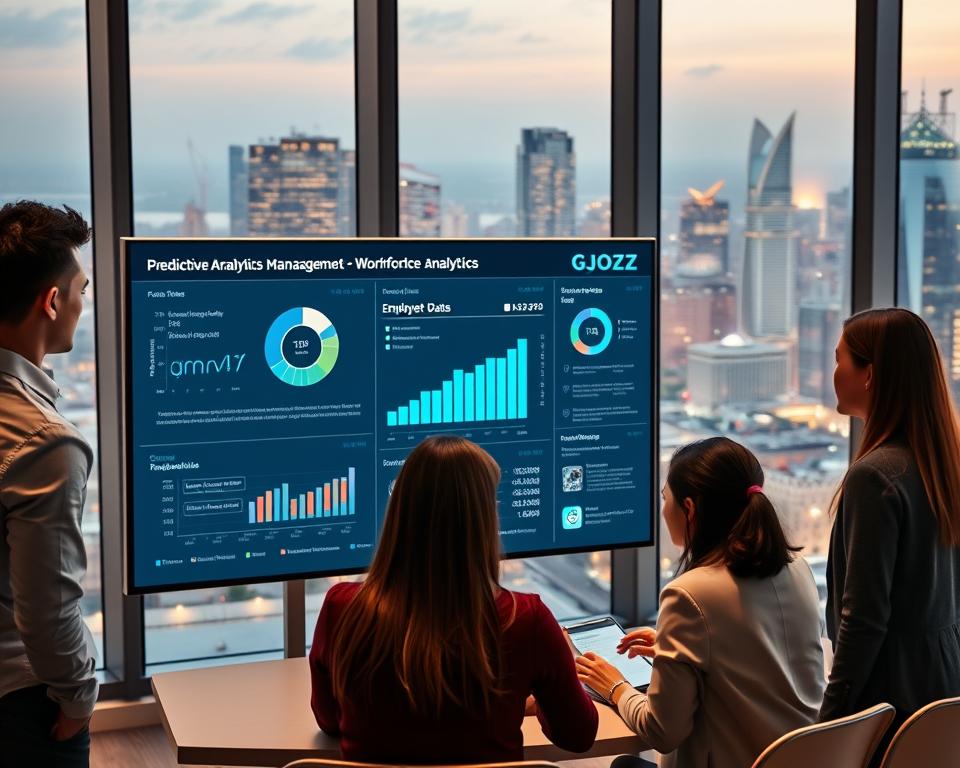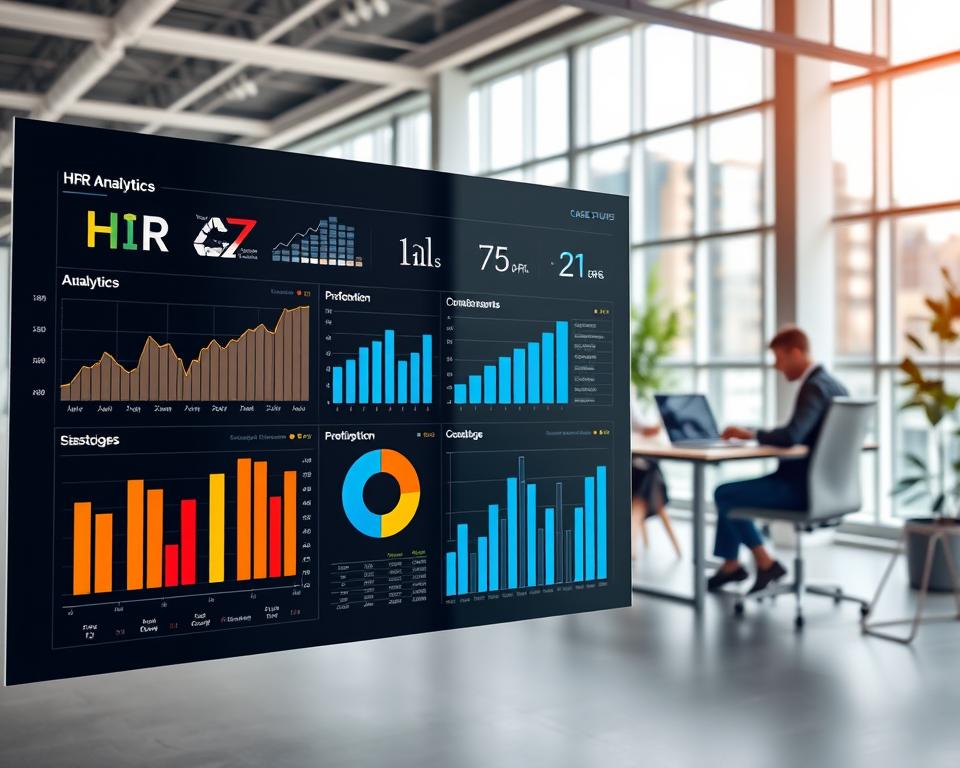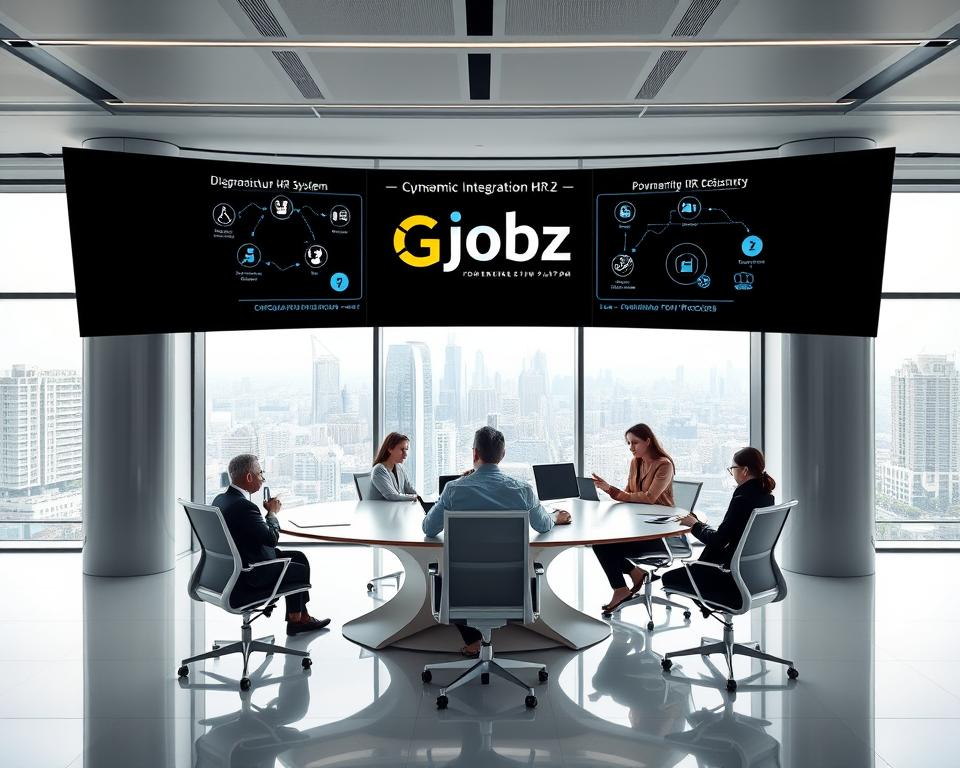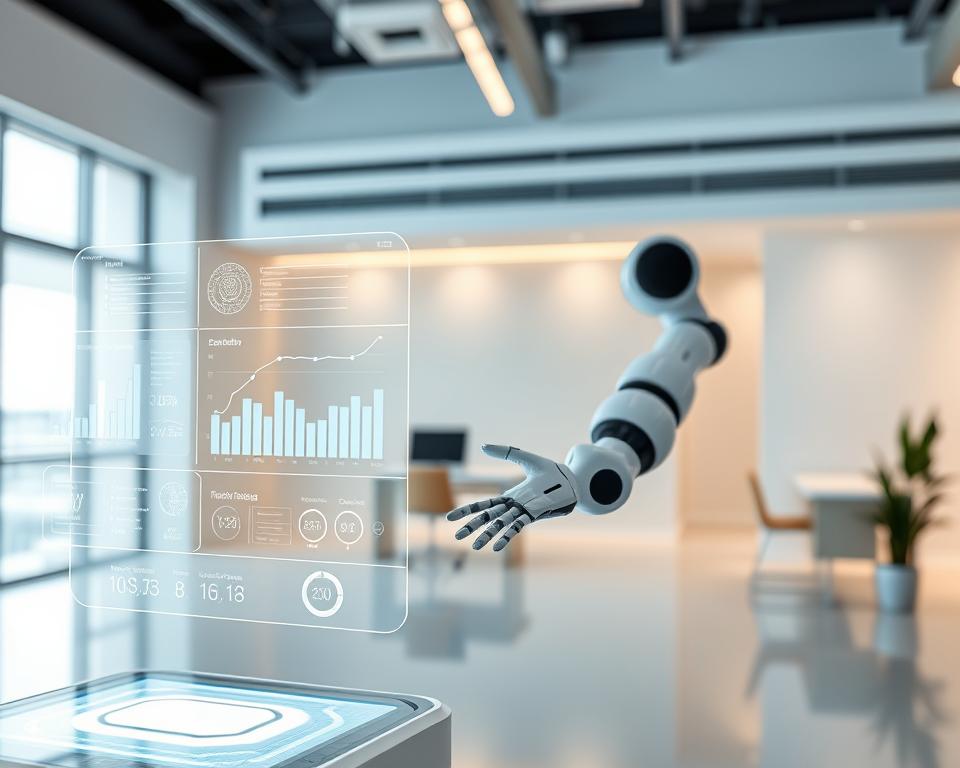
AI Talent Management Platforms For Employee Retention
Turnover costs U.S. companies over $1 trillion yearly. Yet 52% of departing workers say their managers could’ve kept them. Traditional approaches clearly aren’t working. Could data-driven strategies solve what pizza parties and promotions can’t?
Modern workforce challenges demand fresh solutions. Gallup reports 66% of employees feel disconnected from their company’s goals. Manual processes often miss subtle signs of disengagement until it’s too late. This gap creates unnecessary hiring expenses and productivity losses.
Forward-thinking organizations now use intelligent systems to spot retention risks early. These tools analyze patterns in performance reviews, project participation, and peer feedback. For example, Effy AI reduced repetitive HR tasks by 40% while personalizing career growth plans.
Key Takeaways
- Employee turnover costs exceed $1 trillion annually in the U.S. alone
- 66% of workers feel disconnected from organizational objectives
- Internal talent development cuts recruitment costs by up to 50%
- Personalized feedback increases engagement by 34%
- Automated systems save 15+ hours weekly on administrative work
Introduction to AI-Driven Talent Management
The digital transformation wave is reshaping how companies nurture their teams. Outdated spreadsheets and annual reviews can’t compete with real-time analytics that track skill growth and team dynamics. This evolution helps organizations address modern workforce needs while cutting operational costs by 30-45%.
Understanding the Shift in HR Technology
Manual processes once dominated hiring and training. Today, 78% of HR leaders use predictive tools to map career paths. These systems analyze peer interactions, project contributions, and learning patterns. One Fortune 500 company reduced onboarding time by 60% using personalized training modules.
Why Employee Retention Matters Today
Replacing staff costs 1.5x their annual salary on average. Personalized development plans boost employee satisfaction by 41%, according to LinkedIn data. Teams using continuous feedback tools see 28% lower turnover than those relying on annual surveys.
Forward-thinking strategies now blend human expertise with machine learning. Automated check-ins help managers spot disengagement before resignation letters arrive. This proactive approach builds loyalty while strengthening communication across departments.
AI Talent Management Platforms For Employee Retention
Companies now achieve 73% faster resolution of workforce challenges using intelligent solutions. These systems analyze 360° workplace data to prevent costly departures. A Deloitte study found teams using such tools reduce voluntary exits by 29% within six months.

Key Benefits for Organizations
Three core advantages separate modern systems from legacy approaches:
| Metric | Traditional Methods | Smart Solutions |
|---|---|---|
| Cost per retained employee | $18,000 | $6,200 |
| Engagement detection speed | 6-9 months | Real-time alerts |
| Turnover risk accuracy | 42% | 89% |
Continuous feedback loops help managers address concerns before they escalate. One tech firm slashed exit interviews by 67% after implementing weekly sentiment checks.
Real-World Success Examples
IBM’s talent management overhaul reduced leadership pipeline gaps by 55%. Their system identifies high-potential workers through project impact analysis. “We now develop careers, not just fill roles,” notes their CHRO.
Unilever achieved 31% faster promotions using skills-matching tools. Personalized learning plans boosted internal mobility by 40% across global teams. These results prove data-driven strategies create lasting workforce stability.
Exploring Key Features of Top Talent Management Tools
What separates average HR software from game-changing solutions? Leading systems combine three elements: predictive power, adaptable workflows, and seamless connectivity. These features transform raw numbers into strategic roadmaps for workforce stability.

Predictive Analytics and Actionable Insights
Modern platforms analyze promotion patterns and project participation to forecast retention risks. ClearCompany’s tools identify flight risks with 89% accuracy by tracking 14 engagement indicators. One manufacturing client reduced regrettable exits by 37% after implementing these alerts.
PageUp People takes it further with skills gap predictions. Their system recommends training programs 6 months before critical needs arise. “We prevent fires instead of fighting them,” explains their VP of Product.
| Feature | ClearCompany | PageUp People |
|---|---|---|
| Predictive Models | 92% accuracy | 88% accuracy |
| Custom Workflows | Yes | Limited |
| API Connections | 25+ | 15+ |
Customization, Automation, and Integration
Top solutions automate 73% of repetitive tasks like survey distribution and onboarding checklists. BambooHR users save 11 hours weekly through automated performance review reminders. Custom dashboards let leaders track team-specific metrics alongside company-wide goals.
Integration capabilities prove equally crucial. Platforms connecting with Slack and Microsoft Teams see 41% faster issue resolution. As one HR director notes: “Seamless data flow between systems helped us spot communication breakdowns before they impacted morale.”
These tools succeed by balancing automation with human judgment. Weekly sentiment analysis feeds into manager coaching sessions, creating a cycle of continuous improvement. The result? Teams that feel heard – and stay longer.
Enhancing Employee Engagement and Experience with AI
Career stagnation drives 40% of workforce exits annually. Modern systems now map individual growth trajectories using behavioral data and skill assessments. This shift helps workers feel valued while giving managers actionable insights to nurture talent effectively.
Personalized Learning and Development Paths
Adaptive platforms create dynamic roadmaps based on role aspirations and peer comparisons. Salesforce’s Trailhead program boosted certification rates by 47% using bite-sized modules adjusted to learning speeds. “Personalization isn’t luxury – it’s what keeps top performers invested,” notes their L&D director.
Continuous feedback loops refine these paths automatically. Workers at Cisco Systems receive weekly micro-lessons addressing skill gaps identified through project performance. Teams using this approach saw 34% higher engagement scores than traditional training groups.
Streamlined Communication and Onboarding
First impressions matter. HubSpot cut new hire ramp time by 52% using intelligent checklists that adapt to departmental needs. Real-time translation tools help global teams collaborate seamlessly – a pharmaceutical firm reduced miscommunication errors by 68%.
| Metric | Traditional Onboarding | Enhanced Process |
|---|---|---|
| Time to Productivity | 12 weeks | 6.5 weeks |
| Satisfaction Score | 62% | 89% |
| Peer Connections | 4.1 avg | 7.9 avg |
Automated pulse surveys maintain dialogue between reviews. Teams using integrated chat tools resolve concerns 41% faster than email-reliant groups. This constant connectivity builds trust while identifying process bottlenecks early.
Case Studies and Metrics in AI-Powered HR
Global enterprises are rewriting HR playbooks through measurable results from intelligent systems. Concrete numbers now validate what progressive teams suspected – data-driven approaches outperform gut feelings in workforce planning.

Success Stories from Leading Organizations
IBM’s skills-matching initiative reduced project staffing delays by 58% across 23 departments. Their system analyzes 14 engagement indicators to personalize career paths. “We shifted from reactive problem-solving to predictive talent cultivation,” shares their global HR director.
Deloitte achieved 31% lower voluntary exits after implementing weekly pulse checks. Real-time sentiment analysis helped managers address concerns within 48 hours instead of weeks. Unilever’s promotion rates jumped 40% using personalized development roadmaps tied to performance patterns.
Measuring Impact on Turnover and Engagement
Three metrics prove these tools deliver results:
- 47% faster identification of flight risks
- 29% improvement in satisfaction scores
- 22% reduction in recruitment costs
A 2023 Gartner study found teams using continuous feedback tools resolve 68% more concerns before escalation. Automated surveys track 19 engagement drivers – from workload balance to recognition frequency – updating dashboards every 72 hours.
| Metric | Traditional HR | Data-Driven Approach |
|---|---|---|
| Exit Prediction Accuracy | 51% | 89% |
| Promotion Readiness Time | 18 months | 9 months |
| Training ROI | 1.2x | 3.8x |
These outcomes demonstrate how combining human insight with machine learning creates workplaces where people want to stay and grow. The numbers don’t lie – when organizations listen to data, employees feel heard.
Integrating AI Tools with Broader HR Systems
HR departments no longer operate in data silos. Modern workforce strategies require unified systems that connect payroll, benefits, and development tracking. This integration creates a single source of truth for decision-makers.

Seamless Data Integration and Analytics
Leading organizations sync talent management tools with existing software in 3 key areas:
- Compensation systems tracking promotion readiness
- Learning platforms aligning skills with project needs
- Recruitment databases identifying internal candidates
One healthcare provider reduced onboarding errors by 62% after connecting their HRIS with performance trackers. “We now spot training gaps during benefits enrollment,” notes their HR director.
| Integration Type | Time Saved | Impact on Retention |
|---|---|---|
| Payroll + Performance | 9 hrs/week | +27% |
| Learning + Project Mgmt | 6 hrs/week | +19% |
| Recruiting + Internal Mobility | 14 hrs/week | +33% |
Actionable insights emerge when systems share data. New hires at a retail chain receive personalized training based on peer success patterns. This approach boosted first-year retention by 41%.
Consistent communication flows prevent data mismatches. Teams using integrated dashboards resolve payroll disputes 68% faster. The result? Employees trust that their growth aligns with organizational goals.
Improving Performance Reviews and Employee Development
Annual reviews often miss crucial growth opportunities. Modern systems now provide continuous snapshots of team capabilities through automated check-ins. This shift helps leaders address skill gaps before they impact productivity.

Automating Feedback and 360° Evaluations
Traditional reviews rely on outdated data. Real-time systems collect input from peers, clients, and cross-functional partners. Adobe’s check-in tool reduced evaluation bias by 37% while surfacing hidden strengths.
- Weekly pulse surveys track 14 engagement drivers
- Automated peer recognition boosts morale by 29%
- Skill matrices update with every completed project
“The best insights come from daily work, not annual interrogations,” notes a Fortune 500 HR director. Teams using 360° tools resolve development needs 53% faster than those relying on manager assessments alone.
Supporting Continuous Growth and Training Programs
Personalized learning paths now adapt to individual progress. Cisco’s micro-lesson system increased certification rates by 41% through bite-sized modules. Key features driving success:
| Approach | Completion Rate | Skill Improvement |
|---|---|---|
| Traditional Courses | 58% | 22% |
| Adaptive Learning | 89% | 47% |
Coaching algorithms suggest mentors based on career aspirations and communication styles. Workers receiving tailored development plans stay 2.1x longer than those with generic training.
Addressing Turnover Risks Through AI-Driven Insights
Pattern recognition in workforce data now pinpoints flight risks months before resignations occur. Modern systems track 18 behavioral indicators – from meeting participation to peer recognition frequency – creating dynamic risk scores. Predictive analytics transform these signals into actionable alerts, giving leaders time to address concerns proactively.

Predicting Flight Risks with Data Analytics
Communication patterns reveal hidden dissatisfaction. A tech company reduced attrition by 32% after monitoring email response times and collaboration tool activity. Teams showing 3+ weeks of declining peer interactions face 83% higher exit likelihood.
Performance trends offer equally crucial insights. Workers completing tasks 22% slower than peers often disengage within 90 days. “We intervene when productivity dips meet decreased training participation,” shares a retail HR director who cut replacement costs by $4.2 million annually.
Implementing Targeted Retention Strategies
Personalized career paths prove most effective. A financial services firm retained 78% of flagged staff through tailored mentorship programs. Key tactics include:
- Skills-based project assignments matching career aspirations
- Flexible work arrangements adjusted through real-time feedback
- Staggered promotion timelines aligned with individual growth curves
| Approach | Impact | Timeframe |
|---|---|---|
| Monthly development check-ins | 41% retention boost | 6 months |
| Peer recognition programs | 29% morale increase | 8 weeks |
| Cross-training initiatives | 34% skill diversification | 12 weeks |
Continuous data streams keep strategies relevant. One manufacturer updates risk models weekly using project feedback and goal-tracking metrics. This agility helps teams adapt to shifting workforce needs without costly overhauls.
Future Trends in AI-Enhanced Talent Management
Immersive training simulations will reshape professional growth strategies. Virtual reality modules let teams practice complex scenarios safely. Augmented reality overlays provide real-time guidance during equipment repairs. These tools reduce onboarding errors by 47% compared to traditional methods.

Emerging Technologies and Market Shifts
Advanced analytics will forecast workforce needs 18 months in advance. Systems analyze global economic trends alongside internal promotion patterns. A recent PwC study found organizations using these models fill leadership roles 64% faster.
| Predictive Feature | Current Use | 2025 Projection |
|---|---|---|
| Skills Gap Detection | 6-month lead time | 22-month forecast |
| Turnover Prediction | 89% accuracy | 94% accuracy |
| Training ROI Analysis | Quarterly updates | Real-time tracking |
Continuous performance tracking will replace annual reviews. Sensors in collaboration tools measure problem-solving speed and knowledge sharing frequency. Teams using these metrics adjust workflows 73% faster than survey-dependent groups.
Ethical Considerations and Data Privacy
New EU regulations require explainable algorithms for promotion decisions. California’s proposed Workplace Transparency Act mandates bias testing for all HR tools. “We audit our systems quarterly to ensure fair outcomes,” states Microsoft’s Ethics Officer.
- Data anonymization protocols protect worker identities
- Opt-in consent processes for biometric tracking
- Third-party audits of recommendation engines
Balancing innovation with responsibility remains critical. Organizations maintaining public trust scores above 80% see 31% lower recruitment costs. The future belongs to tools that empower teams while safeguarding dignity.
Conclusion
Organizations face a critical choice: cling to outdated methods or embrace tools that turn workforce insights into action. Modern systems bridge the gap between human potential and operational needs through real-time analysis of work patterns and career aspirations.
These solutions deliver measurable results – 34% faster skill development, 41% higher satisfaction scores, and 29% fewer regrettable exits. Continuous feedback loops and personalized growth plans address individual needs while aligning with company objectives.
Success requires balancing innovation with responsibility. Transparent data practices and ethical algorithm design build trust as teams adopt predictive tools. HR leaders who prioritize this balance gain lasting advantages in workforce stability.
The path forward is clear. Invest in talent management systems that convert raw metrics into meaningful development opportunities. Those who act now will cultivate teams ready to thrive amid evolving workplace demands.